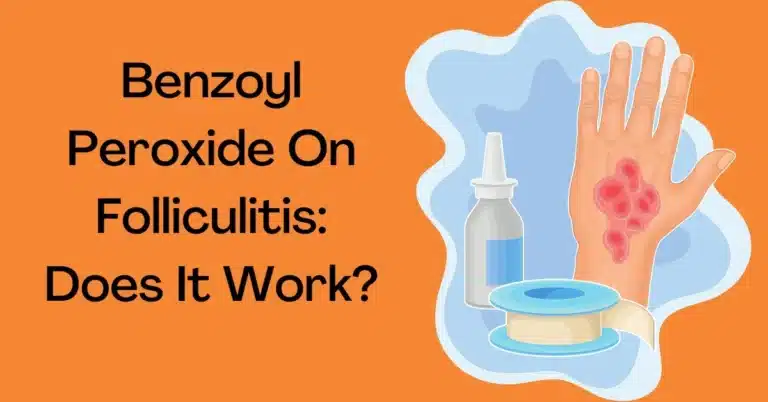From Spread To Soothe: Managing Contagious Viral Rashes

Picture this: you wake up one morning to find your skin covered in red, itchy spots. Panic sets in as you wonder if it’s contagious or something more serious. Don’t worry – you’re not alone!
Viral rashes can be confusing and concerning, but with the right information, you can ease your worries and take steps to care for yourself or your loved ones.
In this article, we’ll guide you through the world of viral rashes, dispelling myths, offering skincare tips, discussing prevention, and even addressing the emotional toll they can take.
Table Of Contents
- Contagious Viral Rashes: Dispelling Myths and Misinformation
- Exploring The Spectrum Of Viral Rashes
- Unmasking The Causes Of Viral Rashes
- The Contagious Conundrum
- Caring For Viral Rashes: Skincare And Comfort
- Prevention: Your Best Defense
- Mental And Emotional Impact Of Viral Rashes: Coping Strategies
- Home Remedies To Ease Discomfort
Contagious Viral Rashes: Dispelling Myths and Misinformation
Viral rashes are often misunderstood, leading to unnecessary panic and stigma. It’s important to understand that not all viral rashes are highly contagious. In fact, many viral rashes pose a low risk of spreading. Rashes caused by viruses like measles, chickenpox, and shingles are more contagious, while others, like roseola, are less likely to spread from person to person.
A key aspect of understanding contagiousness is knowing how the virus is transmitted. Some viruses spread through respiratory droplets, while others spread through direct contact with the rash. To minimize the risk of spreading or contracting contagious viral rashes, practicing good hygiene, including regular handwashing and avoiding close contact with infected individuals, is crucial.
Exploring The Spectrum Of Viral Rashes
Viral rashes come in various shapes and forms, each associated with different viruses and presenting unique characteristics. Some of the most common viral rashes include:
- Measles Rash: The measles virus can cause a distinctive rash that begins on the face and gradually spreads to other parts of the body. It’s often accompanied by a high fever and a cough.
- Chickenpox Rash: Chickenpox, caused by the varicella-zoster virus, is known for its itchy blisters that cover the body. While commonly seen in children, it can affect adults too.
- Rubella Rash: Also known as German measles, rubella presents with a mild rash and swollen lymph nodes. It’s particularly concerning for pregnant women due to its potential impact on the developing fetus.
- Roseola Rash: This rash appears after a high fever has subsided. It’s characterized by small, pink spots and is usually seen in young children.
- Fifth Disease Rash: Parvovirus B19 causes a rash known as the fifth disease, typically resulting in red cheeks and a lacy rash on the arms, legs, and trunk.
- Shingles Rash: The varicella-zoster virus, which causes chickenpox, can reactivate later in life, leading to a painful and blistering rash along a specific nerve pathway.
Unmasking The Causes Of Viral Rashes
Viral rashes occur when the immune system responds to a viral infection, leading to inflammation in the skin. Viruses enter the body through various means, such as respiratory droplets, direct contact with infected individuals or exposure to contaminated surfaces. Once inside, they can trigger a range of symptoms, including rashes.
It’s important to note that not all viral infections result in rashes. While some viruses have a predilection for causing skin-related symptoms, others primarily affect other parts of the body, like the respiratory or gastrointestinal systems. Understanding the specific virus behind a skin rash is the key to proper diagnosis and treatment.
The Contagious Conundrum
Contagiousness is a hot topic when it comes to viral rashes, and understandably so. No one wants to inadvertently spread an infection to others. However, the level of contagiousness varies greatly depending on the virus and the stage of the infection.
Highly contagious viral rashes, such as those seen in measles and chickenpox, can easily spread from person to person via respiratory droplets or direct contact with the rash. On the other hand, rashes like roseola tend to be less contagious, as they’re often accompanied by a fever that has already subsided by the time the rash appears.
To prevent the spread of contagious viral rashes, it’s crucial to practice good hygiene. Regular handwashing, avoiding close contact with infected individuals, and following medical advice regarding isolation and quarantine protocols can go a long way in curbing transmission.
Caring For Viral Rashes: Skincare And Comfort
Dealing with a viral rash isn’t just about tackling the virus itself; it’s also about providing relief from the discomfort it brings. Here are some practical steps to soothe the itch and promote healing:
- Keep It Clean: Gently wash the affected area with mild soap and water to prevent infection. Pat the skin dry to avoid further irritation.
- Hydration Is Key: Apply a fragrance-free moisturizer to keep the skin hydrated and prevent excessive dryness.
- Avoid Irritants: Skip the scented lotions and opt for hypoallergenic products. Loose, breathable clothing can also help prevent further irritation.
- Cool Compresses: Applying a cool, damp cloth to the rash can help reduce itching and inflammation.
- Over-the-Counter Relief: Calamine lotion or hydrocortisone creams can provide temporary relief from itching, but consult a healthcare professional before using them.
Remember, if the rash is accompanied by fever, difficulty breathing, or other concerning symptoms, seek medical attention promptly.
Prevention: Your Best Defense
While viral rashes can be a hassle to deal with, prevention is always better than cure. Vaccinations have been a game-changer in reducing the incidence of viral infections and their associated rashes. Vaccines for diseases like measles, chickenpox, and rubella have proven to be highly effective in preventing these illnesses and their skin-related complications.
In addition to vaccinations, adopting healthy hygiene practices can significantly decrease your risk of contracting or spreading viral infections. Regular handwashing, covering your mouth and nose when sneezing or coughing, and avoiding close contact with sick individuals are all simple yet powerful ways to stay healthy.
Mental And Emotional Impact Of Viral Rashes: Coping Strategies
While we often focus on the physical aspects of viral rashes, their impact on mental and emotional well-being should not be underestimated. Dealing with a rash, especially if it’s visible, can lead to self-consciousness, anxiety, and even depression. Here are some coping strategies:
- Stay Informed: Educate yourself about the rash to better understand its nature, causes, and treatment. This knowledge can empower you and reduce anxiety.
- Seek Support: Don’t hesitate to get in touch with your friends, family, or support groups. Sharing your concerns can be cathartic and reassuring.
- Practice Self-Care: Engage in activities that assist you relax and take your mind off the rash. Whether it’s reading, meditating, listening to music, taking a soothing bath, or enjoying a favorite hobby, self-care matters.
- Mindfulness and Meditation: These techniques can help manage stress and promote a positive mindset.
- Speak to a Professional: If the emotional burden becomes overwhelming, seeking guidance from a mental health professional can provide valuable strategies for managing stress and anxiety.
Home Remedies To Ease Discomfort
While medical treatment and professional advice should always be prioritized for viral rashes, there are a few home remedies that might provide some relief from discomfort and itchiness.
- Oatmeal Baths: Colloidal oatmeal can soothe irritated skin. Add finely ground oatmeal to a lukewarm bath and soak for 15-20 minutes. Gently pat your skin dry afterward.
- Cool Compresses: Applying a cold, damp cloth to the rash can help reduce inflammation and alleviate itching.
- Aloe Vera: The cooling and anti-inflammatory properties of aloe vera gel can provide relief. Gently apply a layer of pure aloe vera gel to the rash and let it dry before rinsing gently.
- Coconut Oil: Coconut oil’s moisturizing properties can help soothe dry, itchy skin. Apply a thin layer to the rash, but be cautious if the rash is on the face or in sensitive areas.
- Chamomile Tea Compress: Brew a cup of chamomile tea, let it cool, and use a cloth to apply it as a compress to the rash. Chamomile has anti-inflammatory properties.
- Honey: Honey possesses natural antibacterial properties and can help with wound healing. Gently apply a thin layer of honey to the rash and rinse gently.
- Cold Milk Compress: Soak a cloth in cold milk and apply it as a compress. The milk’s cooling effect can help ease discomfort.
- Calendula Cream: Calendula cream or ointment, derived from marigold flowers, has anti-inflammatory properties that might provide relief.
- Neem Paste: Apply a thin layer of freshly ground neem leaves paste to the rash. Leave it on for about 20 minutes and gently rinse off with lukewarm water. It soothes irritated skin.
- Turmeric Paste: Turmeric can help alleviate itchiness and inflammation. Mix a small amount of turmeric powder with water or coconut oil to form a paste. Apply the paste to the rash, and leave it on for 10-15 minutes. Gently rinse off with lukewarm water.
Remember, not all home remedies are suitable for every individual or every type of rash. It’s important to exercise caution and consider potential allergies or sensitivities. Always perform a patch test on a small area of unaffected skin before applying any remedy to the rash itself.
If the rash worsens or doesn’t improve with home remedies, seek medical attention. Your healthcare provider can offer personalized guidance and ensure that your rash is properly diagnosed and treated.
In Conclusion
Viral rashes might seem like a formidable challenge, but armed with accurate information, you can confidently navigate through them. Contagious viral rashes, sometimes also known as contagious skin rashes, can spread quickly and require proper precautions to prevent transmission.
Remember, not all viral rashes are created equal in terms of contagiousness. Armed with accurate information, we can dispel myths and anxieties, replacing them with clarity and precaution. From the fiery red of measles to the telltale blisters of chickenpox, each rash has a tale to tell, a virus to reveal.
But knowledge is just the beginning. Alongside understanding comes action – the soothing of itchy skin, the preventive measures against transmission, and the embracing of self-care, both physical and emotional. We find solace in the cool embrace of oatmeal baths, the calming touch of aloe vera, and the age-old wisdom of turmeric and neem.
As we conclude this journey through contagious viral rashes, let’s not forget that these rashes are not just skin-deep. They teach us the value of compassion and empathy, reminding us to care for ourselves and others alike. Whether we’re finding relief in the chill of a compress or building resilience against the emotional toll, we’re embarking on a quest for wellness and understanding.
So, let’s continue to seek knowledge, share support, and shine a light on the misconceptions that shroud contagious viral rashes. By doing so, we empower ourselves to decode not only the rashes themselves but also the collective strength that comes from being informed and united in the face of uncertainty.
FAQs
Q: What are contagious viral rashes?
A: Contagious viral rashes are skin reactions caused by viral infections. These rashes are typically characterized by redness, itching, and sometimes blisters. They can be transmitted from person to person via direct contact, respiratory droplets, or contaminated surfaces.
Q: How do I know if a rash is caused by a virus?
A: Viral rashes often have distinct characteristics. They may appear suddenly, be accompanied by other viral symptoms like fever or cough, and can spread rapidly. Seeking guidance from a medical expert is essential to ensure an accurate diagnosis.
Q: Are all viral rashes contagious?
A: No, not all viral rashes are highly contagious. The level of contagiousness depends on the specific virus causing the rash. Measles and chickenpox rashes, for example, are more contagious than rashes from other viruses like roseola.
Q: What precautions should I take if I have a contagious viral rash?
A: If you have a contagious viral rash, practice good hygiene. Wash your hands regularly, avoid close contact with others, and follow any isolation or quarantine guidelines provided by healthcare professionals.
Q: Can I treat a viral rash at home?
A: While home remedies can provide relief from discomfort, they are not a substitute for professional medical advice. Mild cases might respond to cool compresses, moisturizers, and over-the-counter anti-itch creams. However, consult a healthcare provider before attempting any home treatment.
Q: When should I see a doctor for a viral rash?
A: If the rash is accompanied by severe symptoms such as high fever, difficulty breathing, or if it’s rapidly spreading, seek medical attention immediately. Additionally, if you’re uncertain about the cause of the rash, it’s advisable to consult a healthcare professional.
Q: Can I prevent contagious viral rashes?
A: Vaccinations are an effective way to prevent many viral infections that lead to rashes. Diseases like measles, chickenpox, and rubella have vaccines that significantly reduce the risk of contracting the virus and developing a rash.
Q: How can I soothe the itchiness caused by a viral rash?
A: Gentle skin care practices can help relieve itchiness. Taking lukewarm oatmeal baths, applying fragrance-free moisturizers, and using cool compresses can provide temporary relief. Avoid scratching, as it can worsen the rash and increase the risk of infection.
Q: Are there emotional effects associated with viral rashes?
A: Yes, viral rashes can have emotional effects due to their visible nature and potential discomfort. They might lead to self-consciousness, anxiety, or even depression. It’s important to address these feelings through self-care, support networks, and, if needed, professional guidance.
Q: Can I still go to work or school with a contagious viral rash?
A: It’s advisable to avoid close contact with others when you have a contagious viral rash, as it can prevent the spread of the infection. Consult with a healthcare provider to determine when it’s safe to resume normal activities.
References
https://www.verywellhealth.com/viral-rash-5271435
https://my.clevelandclinic.org/health/diseases/22510-viral-exanthem-rash
https://childrensnational.org/visit/conditions-and-treatments/skin-disorders/viral-exanthems-rashes





